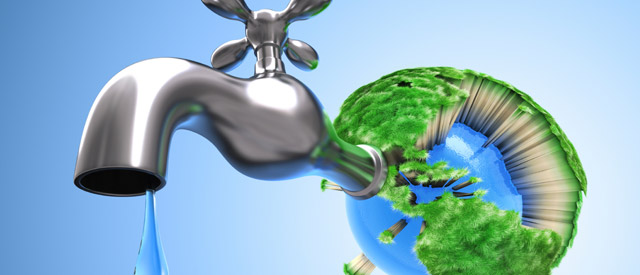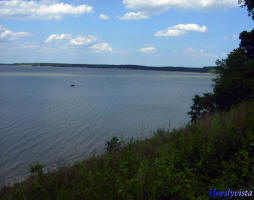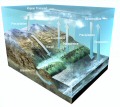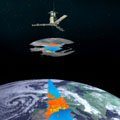 ESA's water mission on track for launch
ESA's water mission on track for launch
Following word from Eurockot that launch of the Earth Explorer SMOS
satellite can take place between July and October this year, ESA, CNES
and the prime contractor Thales Alenia Space are now making detailed
preparations for the last crucial steps before ESA's water mission is
placed in orbit.
The Soil Moisture and Ocean Salinity (SMOS)
satellite has been in storage at Thales Alenia Space's facilities in
Cannes, France since May last year awaiting for a third stage of the
Rockot launcher to be assigned to the mission and a slot given for
launch from the Russian Plesetsk Cosmodrome 800 km north of Moscow. All
being well, SMOS will be the second of ESA's Earth Explorer missions to
launch after the Gravity field and steady-state Ocean Circulation
Explorer (GOCE), which is planned for launch on 16 March 2009.
Following
news from Eurockot Launch Services that launch will be this summer, a
team of SMOS managers and engineers from ESA, CNES and Thales Alenia
Space has just returned from Moscow after meeting with their Russian
counterparts to discuss aspects of the launch.
Now on track for launch, the SMOS team is preparing for the final
milestone prior to the satellite being shipped to Plesetsk – the Flight
Acceptance Review. The review will take place in May and involves the
design, analysis, manufacture and testing being presented to external
reviewers, which ensures that nothing critical has been overlooked. The
expected outcome is 'consent to ship' – giving the green light to pack
up the SMOS satellite and transport it to Russia for launch in the
summer.
|
The water cycle
|
|
SMOS measurement principle
|
The MIRAS instrument is carried on a standard spacecraft platform called Proteus developed by the French space agency CNES.
| Contact information | n/a |
|---|---|
| News type | Inbrief |
| File link |
http://www.esa.int/esaEO/SEM4ZO05VQF_planet_0.html |
| Source of information | ESA (European Space Agency) |
| Keyword(s) | water cycle, climate change |
| Subject(s) | HYDRAULICS - HYDROLOGY , INFORMATION - COMPUTER SCIENCES , MEASUREMENTS AND INSTRUMENTATION , METHTODOLOGY - STATISTICS - DECISION AID , RISKS AND CLIMATOLOGY |
| Relation | http://www.esa.int/esaLP/LPsmos.html |
| Geographical coverage | Europe |
| News date | 12/02/2009 |
| Working language(s) | ENGLISH |
 you are not logged in
you are not logged in







